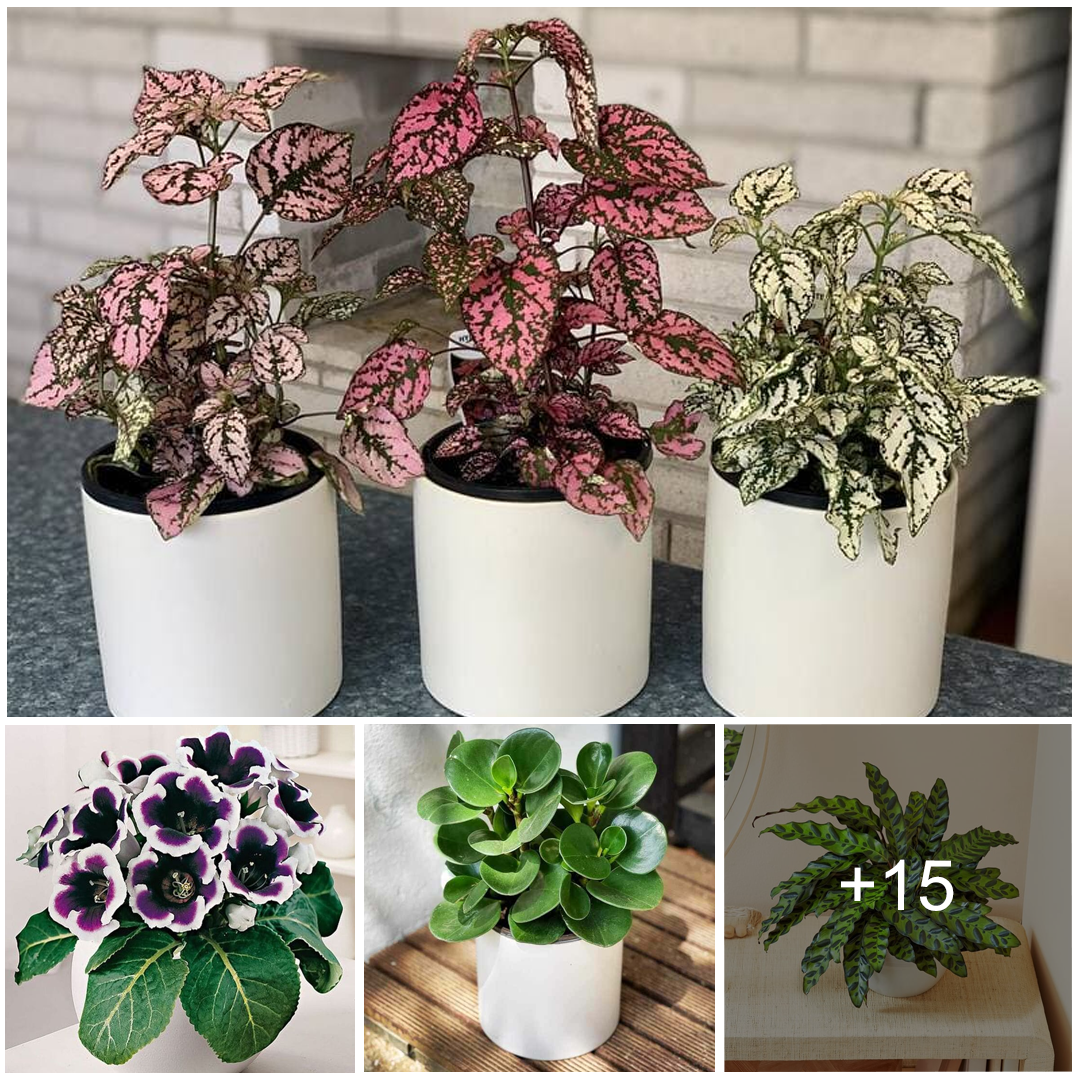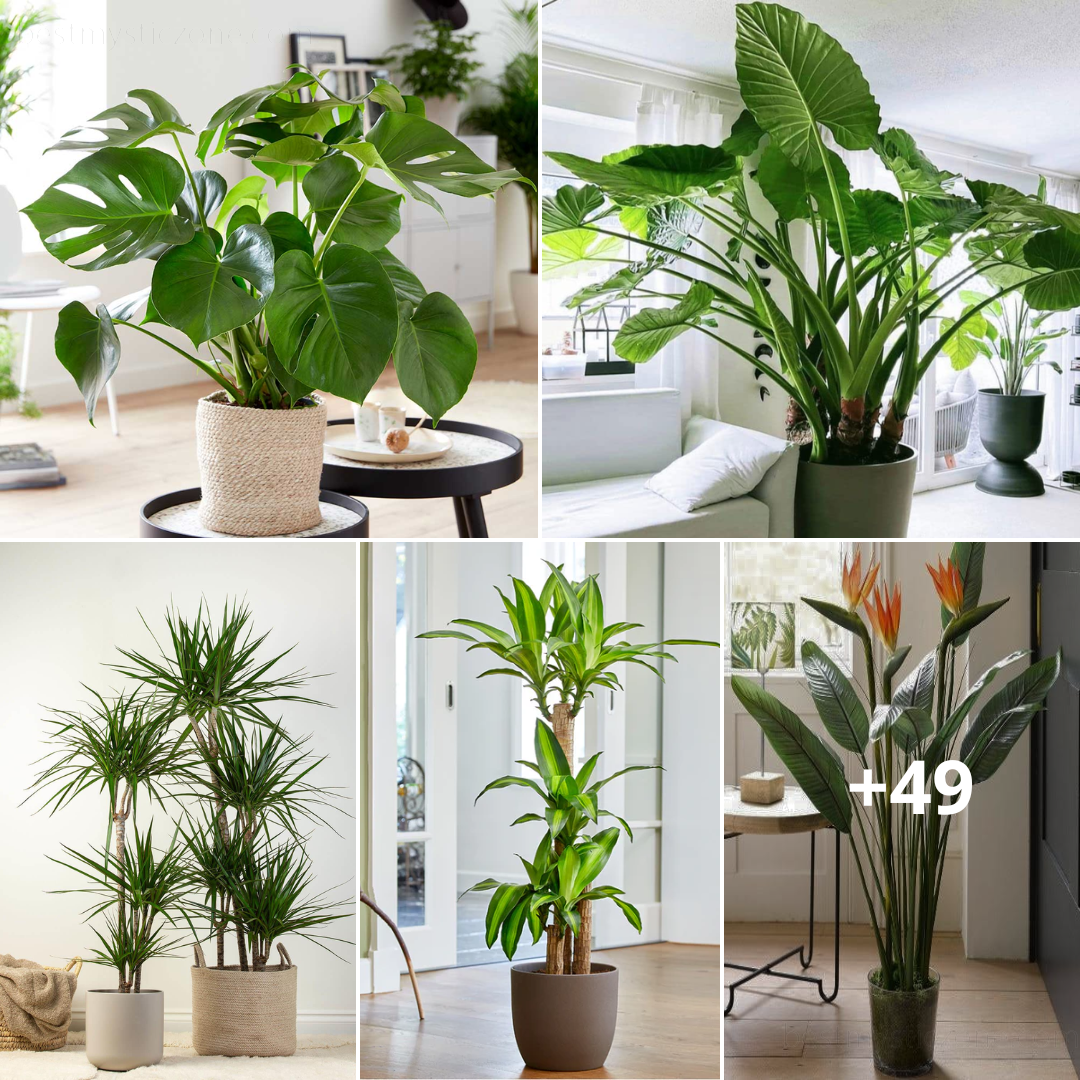The prayer plant got the name from Bartolomeo Maranta, and he was an Italian physician and botanist who was alive in the 16th century. The beauty the maranta leuconeura species offers makes it a very common and well-loved houseplant, and there are many types of prayer plants to choose from when you shop. This is an evergreen perennial that you find growing in hanging baskets a lot. It’s a very slow-grower, and you won’t have to worry about it taking over.
Any healthy type of prayer plant should have six-inch long, full leaves that rise out of the short center stem and drape down the side of the plant. It grows horizontally when you put it on flat surfaces, so you can use it as a pretty ground cover if you live in a humid and warm climate.
This isn’t a demanding plant but it requires special care to do well. It’s not the best choice for people who like plants that thrive on neglect, but it can be a statement piece that will reward your care with beautiful and bold colors. We’ll outline several beautiful choices for you below.

1. Burle Marxii
This type of prayer plant is native to Brazil, and the name is in homage to a landscape architect called Roberto Burle Marx. The Ctenanthe burle marxii comes with paddle-shaped leaves that are a pale silvery gray or bright green, and you’ll see a darker green fishbone pattern that lends the plant the common name the fishbone prayer plant. The underside of the leaves are a pretty maroon coloring, and you’ll see them as the new leaves unfurl and when the foliage raises at night.
This plant was previously classified as a Maranta, and many people will still call it the Maranta amabilis. This species rarely produces flowers when you keep it as a houseplant. When it flowers, you get white, small flowers that are very inconspicuous. It has a wider spread than height to it, and this makes it a great pick for a hanging basket. It can get up to a foot tall and two feet wide.
Amagris is a cultivar of this type of prayer plant that you can find and grow in your own home. It offers paddle-shaped leaves that are thin and silver, and they have medium-green veins and midribs with purple on the underside of the leaf. The rounded leaves have a spike-like, distinct leaf point. The flowers are also small and white, but they’re rare for houseplants. The Maranta Amagris cultivar cna grow up to 16 inches wide and tall.

Fishbone Prayer Plant (ctenanthe burle marxii) 2 by Javier Aleandro / CC BY-NC-ND 2.0
2. Concinna
This pretty type of prayer plant comes with pointed, ovate leaves that are a silvery, pale green color with a darker green herringbone pattern on them and a darker purple underside. It comes with an upright growth habit and will grow to be up to 20 inches tall and 20 inches wide at full maturity. There is also a slightly wavy texture to this plant.
The epithet crocata means saffron colored, and it refers to the plant’s golden, bright orange flowers that are popular throughout Brazil. You can find out under the scientific name of Calathea crocata or under the common name of the saffron-colored calathea. It’s also called the eternal flame plant, and this name was also directly inspired by the bright blooms that are between one and two inches tall. G. Crocatat comes with an upright growth habit too, and it can get 12 inches wide by 18 inches tall. It is best planted in slightly alkaline to slightly acidic soil.

Glossostipula concinna 1a by Scott Zona / CC BY-NC 2.0
3. Elliptica
Geoppertia elliptica has pointed, long, ovate leaves that feature a medium green coloring with thin white striping. The foliage’s undersides are a lighter green. It’s also called the G. vittata, and this was a type of prayer plant that was originally classified under the Calathea elliptica or C. vittata, and it grows natively in South America. The upright growth habit and bushy look allow it to fill in space nicely, and it gets six to eight inches wide and 8 to 12 inches tall at full maturity. When the flowers appear, they’re a light cream color.

Terminalia elliptica by Dinesh Valke / CC BY-SA 2.0
4. Fasciata
Goeppertia fasciata is a type of prayer plant that has rounded, large leaves with wide, dark green stripes and midribs. There are also contrasting stripes in gray or light green, and the undersides of the leaves are purple to dark red. This species is native to Brazil, and it was originally classified as the Calathea fasciata, but people also call it the Maranta borussica.
You’ll get very inconspicuous flowers on this type of prayer plant that are white and usually only appear when you plant it outside. It can get between three and four feet tall, and spread up to two feet. When you repot this plant, keep in mind that it likes soil that is moderately to very acidic.

Calathea by PINKE / CC BY-NC 2.0
5. Insignis
As a Brazil native, this type of prayer plant grows narrow, long, and pointed leaves with a pattern that gives way to the common names of the Rattlesnake Clathea or the Rattlesnake plant. The foliage is a yellowish green to a light green with alternative small and large dark green splotches. Botanically, this plant is called G. lancifolia, C. insignis, or Calathea lancifolia. The leaves are very wavy for the texture, and the undersides are maroon or purple hued. You’ll get a pretty fountain-like spreading growth habit, and it can get up to 30 inches wide and tall at full maturity.

Hirtella insignis by Tarciso Leão / CC BY 2.0
6. Kegeljanii
If you choose this type of prayer plant, you’ll get a surprising pattern on the foliage that is very eye-catching. It creates a very fine yellow or green mosaic, and the pattern is fairly subtle. You can see it much better when you’re close up to the plant. It’s a species that is native to Brazil, and it has many different names attached to it to reflect previous classifications. When it was under the Calathea classification, it was called C. musaica, C. bella, and C. cardiophylla. When this plant was under the Maranta classification, it was M. tessellate var. Kegelijanii, M. kegeljanii, and M. bella.
Another previous name that was much more common and popular is Phyllodes bella. If you ignore the host of names when you’re looking for a cultivar to buy, you’ll find that this plant is usually sold under the Network calathea name.
The leaves on this plant are pointed and oval with slightly wavy margins, and this makes them look a little like an oversized holly leaf. The cultivar was patented in 2008, and it was originally called PP0005. You’ll get a much bushier shape with more prominent variegation with it. It also comes with a common upright growth habit, and it can get up to two feet tall and 18 inches wide at full maturity.

Goeppertia kegeljanii (syn. Calathea bella by Scott Zona / CC BY-NC 2.0
7. Leuconeura
Lemon Lime is a cultivated variety of this type of prayer plant, and it’s very closely related to the red-veined variety. The foliage on the Lemon Lime cultivar is various shades of green with a very bold pattern. It’s common to see a pale green blaze on the plant’s midrib that is surrounded by dark or medium green coloring on the leaves and lime green veins. The leaf veins have a raised look and feel on this plant, and this gives it more texture than you’d get with other plants. The undersides of the leaves sport a pale green hue.
The oval-shaped leaves that Lemon Lime offers grow to be five to six inches long. It also has a spreading growth habit that does very well in hanging baskets. It gets up to 15 inches tall and wide, and it will produce pretty purple flowers in the summer months.
Another cultivar of this type of prayer plant is Fascinator, and it’s more commonly called the black prayer plant. The blackish to dark green leaves come with a pale blaze on the midrib, and it has contrasting purplish-red veins. It’s another solid choice to plant in a hanging basket, and it has a spreading growth habit where it can top out at 15 inches tall and wide.
- leuconeura var. Kerchoveana is another cultivar that is a naturally-occuring variety that is closely related to both the Fascinator and Lemon Lime. It’s common to hear people call it the green prayer plant or rabbit tracks or rabbit’s foot. These names reference the darker green blotches that stand out on the pale green leaves. It can get up to 20 inches tall and wide, and it does well in hanging baskets, just like the other cultivars we touched on in this category. Rabbit Tracks was also the recipient of the Royal Horticultural Society’s 1993 Award of Garden Merit.

Maranta leuconeura by João Medeiros / CC BY 2.0
8. Lietzei
While the majority of types of prayer plants on this list have symmetrical patterns on the foliage, this one is a bit different. It looks a little like an impressionist painted them by hand. Each leaf has an oval shape to it, and it has a very unique marble pattern of white and several shades of green that make each leaf unique. The undersides of each leaf feature a soft lilac coloring.
Fusion White is a patented cultivar, and like other picks on the list, this plant has undergone a reclassification. However, many people still call it Calathea lietzei ‘Fusion White’ or just Fusion White Calathea or White Fusion. It has a compact but semi-erect growth habit to it that tops out between six and eight inches tall and a foot spread. This makes it a nice choice for a table.

Kordmarante (Calathea lietzei) by Maja Dumet / CC BY 2.0
9. Louisae
The Maui Queen is a type of prayer plant in the Goeppertia louisae category, and the whole species is known as Calathea louisae. The oval-shaped but pointed leaves are green and they have a creamy light green and white feathered pattern on the midrib with purple undersides. Maui Queen comes with an upright growth habit that gets up to 24 inches high, and it’ll spread out 18 inches. You want to place this plant in neutral to slightly acidic potting soil to encourage healthy growth.

Prayer Plant by Dennis D / CC BY-NC-ND 2.0
10. Lubbersiana
Unlike the very symmetrical pattern most types of prayer plants have, Ctenanthe lubbersiana will come with a marbled cream and yellow variegation on the medium green colored foliage. The leaves are also rounded and oblong. It’s native to Brazil, and it was originally classified as Stromanthe lubbersiana, but it’s more commonly called bamburanta or the Never Never Plant.
It’s one of the larger types of prayer plants, and it can easily get up to four feet tall and three feet wide. The flowers can appear, but they’re very tiny with a white coloring. This plant won the Royal Horticultural Society’s Award for Garden Merit in 1993 for ornamentals.

Kamm-Marante (Ctenanthe lubbersiana) by Maja Dumet / CC BY 2.0
11. Makoyana
Geoppertia makoyana is a type of prayer plant from eastern Brazil, and it’s also commonly called the Peacock plant due to the more flashy look of the leaves. You’ll get oval-shaped and glossy leaves that have a very refined look to them. The tops of the leaves are a creamy green with lighter green leaf margins, and there are dark green spots that radiate out from the plant’s midvein.
The other common name that seems to fit the plant much better is Cathedral Windows. This name comes from the fact that the plant offers a semi-translucent look. When you look at the underside of the plant’s foliage, the light will stream through the leaves to show you the same pattern along the leaf bottoms but in a purple hue instead of green.
Before this type of prayer plant got reclassified in 2012, it was better known as C. makoyana, and many vendors kept this name. This plant has an upright growth habit more than a spreading one, and it can get up two feet tall and a foot wide. It also won the Award of Garden Merit in 1993 in the ornamental category from the Royal Horticultural Society.

Calathea makoyana (Peacock Plant) Tropical Houseplant by Dan Jones / CC BY 2.0
12. Orbifolia
Geoppertia orbifolia always comes with round, broad leaves that have bold silver stripes with dark to light green coloring and very pale green undersides. This is a stunning type of prayer plant that is a Brazil native, and it was formally classified as Calathea orbifolia. It’s one of the bigger houseplants on the list, and it can get up to three feet tall and wide under excellent growing conditions. It does best if you plant it in a slightly alkaline to slightly acidic soil.

” alt=”13 Orbifolia” width=”799″ height=”533″ data-lazy-srcset=”https://happydiyhome.b-cdn.net/wp-content/uploads/2022/04/13-Orbifolia.webp 799w,https://happydiyhome.b-cdn.net/wp-content/uploads/2022/04/13-Orbifolia-300×200.webp 300w,https://happydiyhome.b-cdn.net/wp-content/uploads/2022/04/13-Orbifolia-768×512.webp 768w” data-lazy-sizes=”(max-width: 799px) 100vw, 799px” data-lazy-src=”https://happydiyhome.b-cdn.net/wp-content/uploads/2022/04/13-Orbifolia.webp” />
Calathea orbifolia tropical plant in an office indoor garden by Dan Jones / CC BY 2.0
13. Ornata
The Pinstripe plant or Geoppertia ornata comes with elliptical, dark green, pointed leaves with thin whitish-pink stripes that look like a painter quickly applied them with a thin brush. You may also hear this plant referred to as G. ornata majestica, and it’s native to the southeastern portion of Columbia and the southwestern portion of Venezuela. It has an upright growth habit, like most types of prayer plants, and it can get up to three feet tall and wide at full maturity. When you repot this plant, it likes to have slightly alkaline to slightly acidic soil, like many hibiscus plants.
Beauty Star is a very popular cultivar of this category, and it has elliptical, pointed leaves that are very light green with dark green edges and centers with pink, creamy stripes on the leaves. When you compare it to the species plant, this one is different because it has light green patches behind the creamy pink striping. Since it underwent a species reclassification, you’ll find it sold under Beauty Star Calathea, and it also has an upright growth habit that can get up to 18 inches wide and tall.

Musa Ornata by Dinesh Valke / CC BY-SA 2.0
14. Roseopicta
The meaning of this type of prayer plant’s name is rose painted, but this tropical plant’s common name and the description simply can’t do this plant justice. It’s hard to describe everything that goes on in the pattern you’ll see on the plant’s foliage unless you see it for yourself.
For starters, it has a feathery pink or cream outline on the oval-shaped leaves, and the leaves are dark, wide, and have light green striping with a bright pink color on the midrib. There are also wider green margins. As the new leaves grow, the purple undersides are easy to spot. You can find this species growing in Ecuador, Colombia, Brazil, and Peru, and it’s also called C. illustrus and Calathea roseopicta. G. Roseopicta will get up to a foot wide and 18 inches tall.
Dottie is another culviare you should look for in this category, and it has oval, dark green leaves that are so dark they’re almost black, and it has feathery, thin pink outlines and midribs with dark purple or red undersides. You’ll often hear this plant called rose-painted calathea ‘Dottie’ and Calathea roseopicta ‘Dottie.’ This plant will get between 12 and 18 inches tall and wide at full maturity.
A third cultivar in this category is G. rosepicta ‘Rosy’ that has rounded, large leaves with greenish-black margins that surround a silvery-mauve interior that can also be a bright fuchsia with pink undersides. You may hear this cultivar referred to as C. roseopicta ‘Rosy’ or the rose-painted calathea ‘Rosy.’ It can get between one and two feet tall and wide at full maturity.

Calathea roseopicta by Dick Culbert / CC BY 2.0
15. Rufibarba
Offering feather-shaped, long leaves, this type of prayer plant is big on texture. It comes with very wavy leaves in a dark green coloring with tiny hairs covering them that lend a very fuzzy, soft feel. So, the common names of the Velvet Calathea and the Furry Feather Calathea make sense.
Since the genus name changed with this plant, this native to the northeast portion of Brazil is also commonly referred to as Calathea rufibarba. This prayer plant offers an upright growth habit that tops out at three feet tall with a 20 inch spread. The flowers are bright yellow and showy, and it was the recipient of the Royal Horticultural Society’s Award of Garden Merit in 2012 in the ornamental category.

Calathea Rufibarba by Maja Dumet / CC BY 2.0
16. Setosa
Gray Star is a very popular cultivar of the Calathea setosa variety that makes a great houseplant. This variety offers elliptical, long leaves that form a point, and they have dark leaf veins with a pale silver coloring with purplish-red undersides. The understated flowers on this type of prayer plant are white and tiny when they bloom. It’s also one of the bigger types of prayer plants on the list, and it tops out at three feet wide and five feet tall.

Ctenanthe setosa 03 by Scott Zona / CC BY-NC 2.0
17. Thalia
Stromanthe thalia is a type of prayer plant that has lance-shaped, long leaves that come to a point and are dark green with very pale midribs and purplish-red undersides. You’ll find this plant being sold under the S. sanguinea name, and sanguinea name refers to the ruddy coloring on the underside of the leaves. This also lends to the rather unfortunate name of the Bloody Prayer Plant. It’s native to Brazil, and it has an upright growth habit that can reach three feet wide and five feet tall when you grow it outside on your patio. As a houseplant, it usually stays roughly three feet tall and wide. When it flowers, you’ll get showy white and red coloring.
‘Triostar’ is a cultivar of this type of prayer plant that you may be interested in adding to your indoor plant setup. It also shares the Never Never plant name, and it has a colorful mix of pink, white, and green variegation on the leaves with pinkish-red undersides. They are symmetrical motifs on this plant, and it displays a light marbling on each leaf that is unique. You may hear this plant referred to as ‘Triostar’ stromanthe, S. sanguinea ‘Triostar’ or ‘Tricolor’ stromanthe. It can spread out two feet and reach three feet wide.

Thalia by Joy Weese Moll / CC BY-NC 2.0
18. Veitchiana
This type of prayer plant can look like it has an entire jungle in the foliage when you look at it. It has oval-shaped, large leaves with yellow highlights and several green hues all within a feathery outline with broad green margins. When you look at the underside of the leaves on this type of prayer plant, you’ll get the same pattern but it has purple instead of green.
This cultivar is also called ‘Flamestar’ or Calathea veitchiana ‘Flamestar.’ Among all of the types of prayer plants on the list and their cultivars, this one is going to be the hardest to find. It has an upright growth habit that tops out at 24 inches. If you look at the ‘Medallion’ cultivar in this category, it has a feathery pattern on rounded leaves. Along the midrib, you’ll see a pale green blaze surrounded by darker green coloring and pale green, wide leaf margins that enclose the creamy feather-shaped outlines. The undersides of the leaves are maroon or purple in color.
This patterned type of prayer plant is often mistaken for the rose-painted calathea or Calathea roseopicta, but it’s a totally different species. There is a very strong family resemblance between the two plants, and it’s easy to see why they get confused. However, there aren’t any stripes on this plant like the G. roseopicta plant has, and the feathery pattern is much more bold and distinct. It can get up to two feet tall and wide at full maturity.

Calathea Veitchiana by Dick Culbert / CC BY 2.0
19. Warszewiczii
This stunning tropical type of prayer plant is also called jungle velvet, and this references the velvety, large leaves this plant displays. Jungle Velvet’s foliage tapers to a point with an ovoid shape, and the leaves are usually very dark green with an emerald coloring along the midrib and deep burgundy undersides.
It was previously classified as a calathea, but this Central America native is commonly called C. warscewiczii, Calathea warszewiczii, or the Jungle Velvet Calathea. Unlike most of the other plants in the arrowroot family, this one will produce very showy, large flowers. The flowers start out as a cream color and switch to yellow and then pink. It’s also a larger houseplant to grow, and it can easily reach 40 inches tall and wide.

Calathea warszewiczii, known as Jungle Velvet. By Dick Culbert / CC BY 2.0
20. Zebrina
The final type of prayer plant on the list has elliptical-shaped, large leaves that will taper to a point and have light green coloring with dark green, wide stripes that fork at the leaf margins. The foliage’s underside is also green. Due to the stripes, many people call this the Zebra Plant, and it’s native to Brazil. It offers a fountain-like growth habit and can get two or three feet tall with a two or three foot spread.

starr-070906-8751-Calathea_zebrina-leaves by Forest and Kim Starr / CC BY 2.0
Bottom Line
We’ve outlined 20 stunning types of prayer plants you can consider adding to your home or garden this year. They do require slightly more maintenance to keep them thriving and happy, but they’ll reward you by offering a large, brilliant houseplant that brings a touch of the tropics to your space.

























